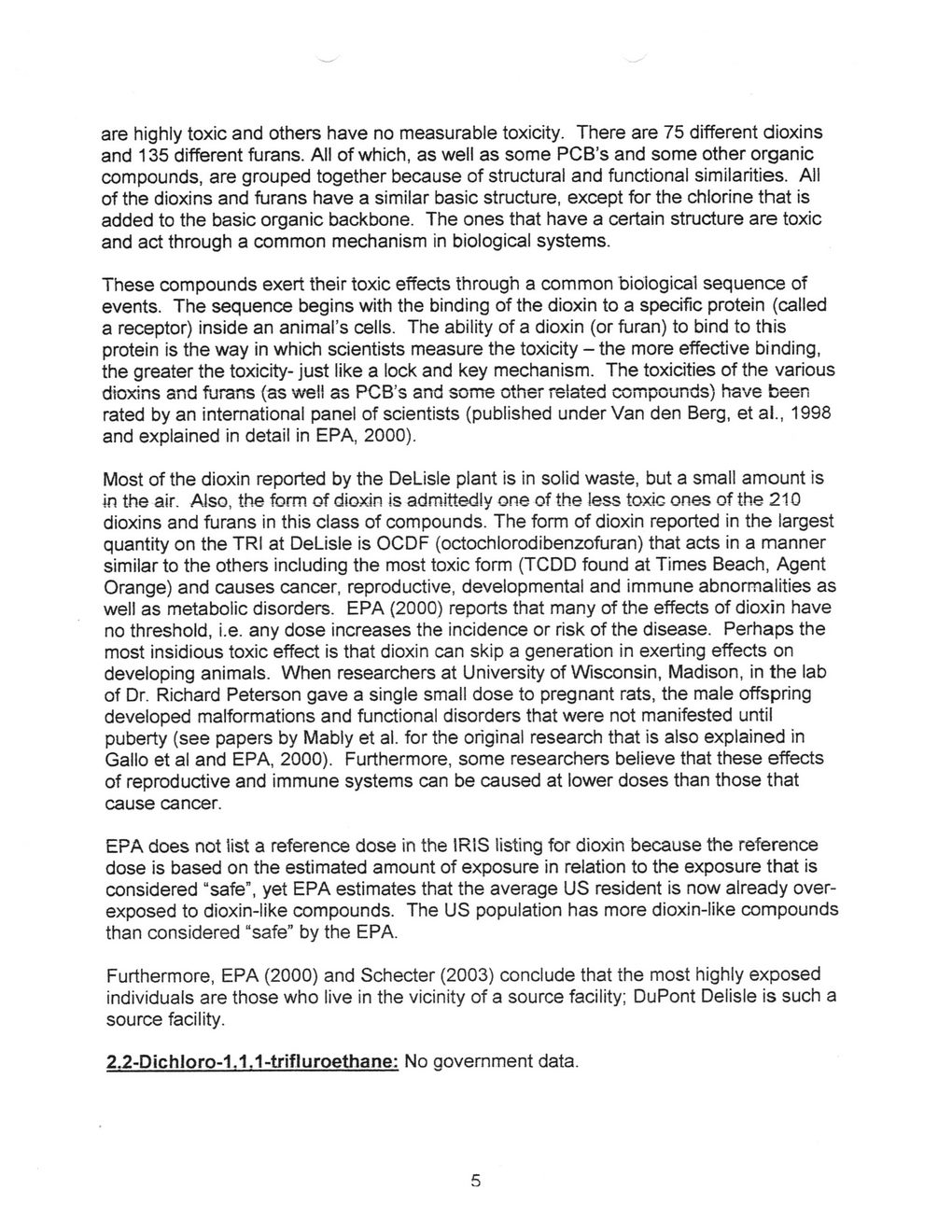This text was obtained via automated optical character recognition.
It has not been edited and may therefore contain several errors.
are highly toxic and others have no measurable toxicity. There are 75 different dioxins and 135 different furans. All of which, as well as some PCB’s and some other organic compounds, are grouped together because of structural and functional similarities. All of the dioxins and furans have a similar basic structure, except for the chlorine that is added to the basic organic backbone. The ones that have a certain structure are toxic and act through a common mechanism in biological systems. These compounds exert their toxic effects through a common biological sequence of events. The sequence begins with the binding of the dioxin to a specific protein (called a receptor) inside an animal’s cells. The ability of a dioxin (or furan) to bind to this protein is the way in which scientists measure the toxicity - the more effective binding, the greater the toxicity- just like a lock and key mechanism. The toxicities of the various dioxins and furans (as well as PCB’s and some other related compounds) have been rated by an international panel of scientists (published under Van den Berg, et al., 1998 and explained in detail in EPA, 2000). Most of the dioxin reported by the DeLisle plant is in solid waste, but a small amount is in the air. Also, the form of dioxin is admittedly one of the less toxic ones of the 210 dioxins and furans in this class of compounds. The form of dioxin reported in the largest quantity on the TRI at DeLisle is OCDF (octochlorodibenzofuran) that acts in a manner similar to the others including the most toxic form (TCDD found at Times Beach, Agent Orange) and causes cancer, reproductive, developmental and immune abnormalities as well as metabolic disorders. EPA (2000) reports that many of the effects of dioxin have no threshold, i.e. any dose increases the incidence or risk of the disease. Perhaps the most insidious toxic effect is that dioxin can skip a generation in exerting effects on developing animals. When researchers at University of Wisconsin, Madison, in the lab of Dr. Richard Peterson gave a single small dose to pregnant rats, the male offspring developed malformations and functional disorders that were not manifested until puberty (see papers by Mably et al. for the original research that is also explained in Gallo et al and EPA, 2000). Furthermore, some researchers believe that these effects of reproductive and immune systems can be caused at lower doses than those that cause cancer. EPA does not list a reference dose in the IRiS listing for dioxin because the reference dose is based on the estimated amount of exposure in relation to the exposure that is considered “safe”, yet EPA estimates that the average US resident is now already overexposed to dioxin-like compounds. The US population has more dioxin-like compounds than considered “safe” by the EPA. Furthermore, EPA (2000) and Schecter (2003) conclude that the most highly exposed individuals are those who live in the vicinity of a source facility; DuPont Delisle is such a source facility. 2.2-Dichioro-1.1.1-trifluroethane: No government data. 5

Dupont Air Hearings Sierra-Club-Recommendations-(06)